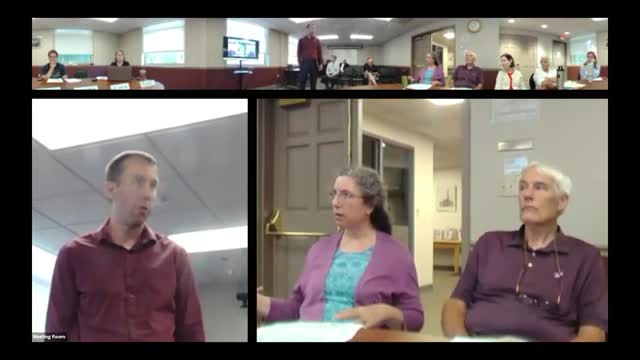Confusion over lighting plans raises concerns about safety
July 11, 2024 | Town of Concord, Middlesex County, Massachusetts

This article was created by AI summarizing key points discussed. AI makes mistakes, so for full details and context, please refer to the video of the full meeting. Please report any errors so we can fix them. Report an error »

In a recent government meeting, officials engaged in a detailed discussion regarding the proposed lighting plans for a site, focusing on the discrepancies between existing and proposed floodlight measurements. Concerns were raised about the accuracy of light readings, particularly the prevalence of glare from floodlights that are not properly directed, which could lead to over-illumination of the area.
Participants noted that current measurements indicated zero light levels in certain areas, despite visible light spilling onto nearby structures and parking areas. This inconsistency prompted questions about the methodology used for measuring light levels, with suggestions that measurements should be taken at a consistent height—either at ground level or at three and a half feet—to allow for accurate comparisons.
The conversation highlighted the need for clarity in the proposed lighting plan, particularly regarding the impact of new fixtures on the overall illumination of the site. Officials expressed a desire to ensure that the new lighting would not exacerbate existing issues with glare and visibility, which could affect both pedestrians and nearby residents.
Additionally, the discussion touched on the importance of producing nighttime renderings to visualize how the site would appear once illuminated, a practice that has been utilized in other projects. The meeting concluded with a consensus on the necessity of reconciling the existing light measurements with the proposed plans to avoid potential criticism and ensure compliance with dark sky regulations.
Overall, the meeting underscored the complexities involved in urban lighting design and the importance of accurate data in making informed decisions that balance safety, aesthetics, and community impact.
Participants noted that current measurements indicated zero light levels in certain areas, despite visible light spilling onto nearby structures and parking areas. This inconsistency prompted questions about the methodology used for measuring light levels, with suggestions that measurements should be taken at a consistent height—either at ground level or at three and a half feet—to allow for accurate comparisons.
The conversation highlighted the need for clarity in the proposed lighting plan, particularly regarding the impact of new fixtures on the overall illumination of the site. Officials expressed a desire to ensure that the new lighting would not exacerbate existing issues with glare and visibility, which could affect both pedestrians and nearby residents.
Additionally, the discussion touched on the importance of producing nighttime renderings to visualize how the site would appear once illuminated, a practice that has been utilized in other projects. The meeting concluded with a consensus on the necessity of reconciling the existing light measurements with the proposed plans to avoid potential criticism and ensure compliance with dark sky regulations.
Overall, the meeting underscored the complexities involved in urban lighting design and the importance of accurate data in making informed decisions that balance safety, aesthetics, and community impact.
View full meeting
This article is based on a recent meeting—watch the full video and explore the complete transcript for deeper insights into the discussion.
View full meeting
